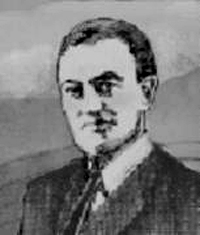
Joseph Alois Schumpeter (1883-1950)
In 1939, Joseph Schumpeter, the Austrian-born economist who moved to America, published a two-volume work, “Business Cycles: A Theoretical, Historical and Statistical Analysis of the Capitalist Process.” In it he argued that long waves stemmed from innovation. A modern example could be `Just in Time’ which appears to have first been used in the car industry before spreading throughout manufacturing. The work also incorporated Kondratieff’s findings and helped publicise them. However, Kuznets, whose own work is mentioned above, was critical of such an explanation and was not convinced by the Schumpeter argument for cycles.
Indeed, the very existence of cycles is disputed. There are two extreme positions: the first, the exogenous theory, views fluctuations in the economy as being caused by disturbances outside the economic system; the other, the endogenous theory, seeks an internal or inherent explanation.
A favourite example of the former is the tie-in of sunspot activity with Jevons’s findings which would explain those `commercial crises’ as being caused by the effects of periodic sunspots on crops and consequently the economy.
Those supporting the endogenous case, who refer to long waves rather than cycles, consider that there is a natural order or evolution
intrinsic in economic activity where expansion leads to contraction with both containing and nurturing the seeds of the other and thus leading to a quasi-regular alternation.
No matter whether they are thought of as waves or cycles, the pragmatists responsible for investment decisions should be aware
of periodic recurrence. All of the above resulted from the work of distinguished economists. A host of other cycles affecting the
economy and investment have been identified by these are not as well-known or deemed as significant.
Schumpeter suggested a model in which the four main cycles, Kondratieff (54 years), Kuznets (18 years), Juglar (9 years) and
Kitchin (4 years) can be added together to form a composite waveform.
Looking at the periodicities, it is tempting to assume that they are harmonics. A Kondratieff wave could consist of three lower degree Kuznets waves. Each Kumets wave could, itself, be made up of two Juglar waves. Similarly two (or three) Kitchin waves could form a higher degree Juglar wave. If each sequence or degree were in phase, more importantly if the downward arc of each was simultaneous so that the nadir of each was coincident it would explain disastrous slumps and consequent depressions.
Contemporary opinion is that there is insufficient evidence decisively to determine whether or not the cycles do synchronise in this way. According to Dewey the periods are 53.25, 17.75 and 8.88 years and according to Tomes they are 53.38, 17.793 and 8.897 years. While Dewey supports the view that the cycles appear to be harmonically related, Tomes gives a fundamental theory showing why they should be.